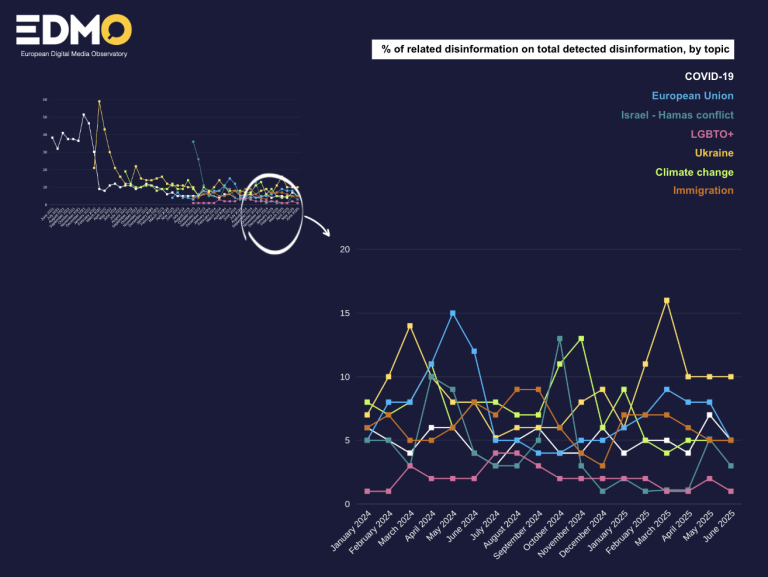The Escalation of Disinformation in the Israel-Iran Conflict: AI Takes Center Stage
The digital battleground has become as crucial as the physical one, particularly in the context of the recent 12-day conflict between Israel and Iran. Disinformation surrounding this crisis has reached unprecedented levels, fueled by the widespread use of artificial intelligence (AI) to create deceptive content. A recent report by the European Digital Media Observatory (EDMO) reveals that the Israel-Iran conflict was the most targeted topic by disinformation in June 2025, accounting for 14% of the 1,502 fact-checked articles published by EDMO’s network. This surge in fabricated information underscores the growing threat posed by AI-generated disinformation in shaping public perception and potentially exacerbating real-world tensions.
The EDMO report highlights several prominent disinformation narratives surrounding the conflict. One notable trend was the exaggeration of the impact of Iranian counter-attacks, effectively bolstering Iranian state propaganda. False claims about Iran downing Israeli F-35 fighter jets circulated widely, despite being unsubstantiated and denied by Israel. AI-generated videos depicting the destruction of Ben Gurion Airport in Tel Aviv and other Israeli cities further amplified the misinformation campaign. These fabricated visuals, designed to sow panic and portray a distorted reality of the conflict’s impact, were widely disseminated across social media platforms.
Conversely, disinformation also targeted Israel’s actions, with fabricated videos showing alleged celebrations by Iranians in response to Israeli strikes and a staged explosion at Evin prison in Tehran. A particularly egregious example involved a false narrative claiming Israeli Prime Minister Benjamin Netanyahu fled to Greece after bombing Iran. This multifaceted approach to disinformation, targeting both sides of the conflict, underscores the deliberate and sophisticated nature of the campaigns. The proliferation of such narratives highlights the vulnerability of online audiences to manipulated information and the potential for such content to inflame existing political tensions.
The report also reveals the alarming rise of AI as a tool for disinformation. The use of AI-generated content related to the Israel-Iran conflict reached a record high, representing 10% of all fact-checked disinformation. This surge is likely attributed to the increasing accessibility and affordability of AI video generation technology. The scarcity of authentic footage, partly due to Israeli restrictions on disseminating images of affected areas, further created a vacuum that was readily filled by fabricated content. This highlights the need for proactive measures to identify and debunk AI-generated disinformation, as well as strategies to promote media literacy and critical thinking among online users.
The emergence of AI-generated content represents a significant shift in the tactics employed in conflict-related disinformation. Previously, such campaigns relied heavily on images and videos taken out of context or manipulated through traditional editing techniques. While these methods persist, the rapid advancement and accessibility of AI technology have provided malicious actors with powerful new tools to create highly convincing and easily disseminated fake content. This evolution poses a considerable challenge to fact-checkers and necessitates the development of innovative methods for detecting and countering AI-driven disinformation.
Beyond AI-generated content, other disinformation tactics were also employed during the Israel-Iran conflict. The use of computer-generated imagery (CGI) extracted from video games, notably in the fabricated depiction of an Israeli F-35 being shot down, exemplifies the adaptability and resourcefulness of disinformation actors. The continued reliance on out-of-context images and videos further underscores the need for comprehensive strategies to combat disinformation, incorporating both technological solutions and educational initiatives to empower users to critically evaluate online content. The Israel-Iran conflict serves as a stark reminder of the escalating threat of disinformation in the digital age and the urgent need for collective action to address this challenge. The increasing sophistication of disinformation tactics, particularly the leveraging of AI, necessitates collaborative efforts between governments, tech companies, media organizations, and civil society to protect the integrity of information and safeguard democratic processes.


